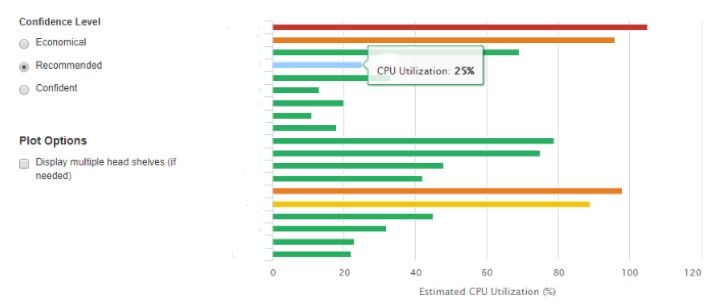Get ready to meet the team of data scientists behind HPE InfoSight. And learn how we’re leveraging this AI-driven analytics platform to improve the customer, support, and sales experience.
In 2012, InfoSight was launched with the intention of leveraging telemetry data to identify, predict, and solve customer issues with storage arrays. This in turn would allow our support team to consist primarily of Level 3 engineers.
The bold vision was put in place by our Chief Data Scientist at the time. In the early days of Nimble Storage, the data science team knew data would be valuable and had the foresight to begin collecting DNA about the hardware being deployed in the field. InfoSight enabled the team to leverage multiple years of detailed performance data pertaining to hard drives, solid state drives, fans, CPUs, power supplies, and network cards. This trove of data became the backbone of InfoSight and the data science team.
In the years since the launch of InfoSIght, the data science team has played an integral role in differentiating our storage arrays from our competitors. Leveraging installed base data allowed the team to programmatically open, remediate, and close cases on our customers’ behalf. As the scope of data increased, the data science team has been able to create more sophisticated models and tools that not only enhance the customer experience but also the support and sales experiences too. Additionally, the data used by the data science team has expanded into the stack leveraging sensor data and configuration data from virtual machines connected to the various HPE platform.
The lessons learned from our multi-petabyte analytics platform has directly improved the following experiences:
Customer experience
InfoSight data science has been providing customers with the ability to view capacity and performance predictions based on specific workloads allowing them to avoid troublesome situations that could lead to poor performance. Various resource models have been created to help a customer identify periods of saturation, cache latency, and CPU usage.
Configuration data also plays an important role in the analytics provided to customers. Individual volumes can also become problematic so we closely monitor overprovisioning on the customer array. When analyzing all the data for a particular customer we are able to confidently use our models based on real-world data to make recommendations to our customers on upgrade needs to ensure they continue receiving the performance they expect from our hardware.
Support experience
The InfoSight data science team has worked closely with our support organization since the beginning to provide insights into the install base performance of similar customer configurations. The team partners with support to help create signatures that are used for proactive case monitoring. As we feed our support data into our data lake we are able to look for similar patterns across various models of hardware or software releases to refine rules that are currently in place.
InfoSight has also been a key tool in the support investigation process. It allows a customer to gain insights into the operation of their HPE equipment while viewing the same information a technical support engineer will see.
Sales experience
The team has created tools which are used in the sales cycle to help right-size a customer environment leveraging our real-world installed base knowledge. These sizing models are sophisticated in nature and take into account known performance metrics, sensor data, and latency. They allow users to input various criteria that matters to the customer and weigh cost versu performance—while providing recommendations that are based not just on marketing data but on known performance for particular workloads, array models, or disk types.
Historically. we have also been able to leverage our recommendation engine to generate leads and opportunities the allow the sales team to help serve our customers.
Get ready to get to know today’s InfoSight data science team
The HPE InfoSight data science team has a wide breadth of experience, ranging from recent grads to 20+ years. The team has received multiple patents for the work in the data space. The data scientists work closely with our dedicated data engineers, support team, and product specialists. In the coming weeks you can check this space for blogs written by the individual data scientists discussing the technology stack, research approach, real-world findings, and formula usage.
ABOUT THE AUTHOR
Katie_Fritsch
I am Marketing Manager for HPE InfoSight. Before that, I led the marketing for the deep learning startup, Nervana Systems, up until its acquisition by Intel in 2016.


















